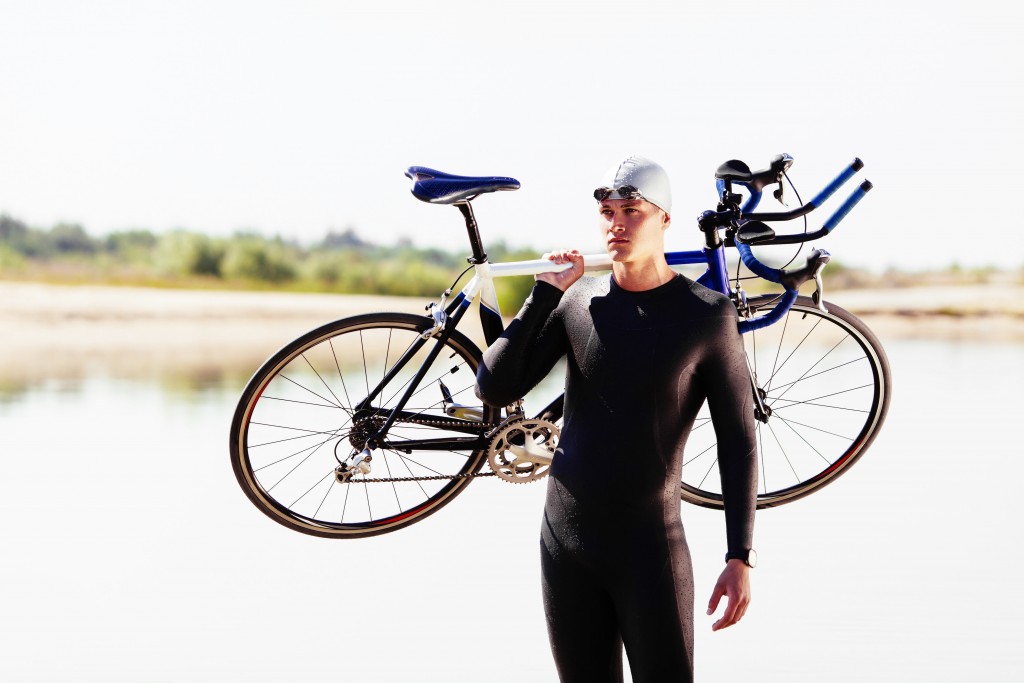In Italy too, the passion for triathlon is constantly growing. More and more athletes are competing with this discipline, which became Olympic in 2000, which brings together swimming, cycling and running. This sport is very demanding, in fact, not only brings great benefits from the physical point of view, ensuring an organic training of the whole body, but guarantees considerable benefits from the mental point of view, allowing you to strengthen the character and self-esteem.
There are different types of Triathlon races, which differ according to the distances to be covered: from the sprint, the shortest and the most practiced, to the super long, the legendary Ironman, the most famous and the most conclusive.
For those approaching this sport it is important to understand what type of equipment is necessary: below we focus on the type of triathlon uniform to be adopted in the different types of race.
The Body
The basic piece of clothing for a Triathlon is usually a type of Body, specifically designed for this sport, which is able to adapt well to the three stages of the race. This full suit, usually in lycra, has in fact a pad inside, similar to that of cycling shorts but usually more contained, to be less bulky during the run, and thinner, to be able to dry faster after the swimming phase. Often those who prefer a less adherent garment opt for a full-cut suit consisting of a tank top and shorts that have a back with characteristics similar to those indicated above. A uniform made up of divided parts can be more comfortable for long distance races.
The body must have characteristics of particular comfort and breathability, because it must remain in contact with the athlete’s skin for the entire duration of the race and must adapt to the different athletic gestures required during the different stages of the competition. This is why it is important to choose leotards that have ergonomic cuts and advanced fabrics.
Even the internal design of the pad is very important for comfort, the absence of seams in contact with the skin reduces friction and prevents irritation
It is important to inquire about the weather conditions of the race. For example, in a day with high temperatures the breathability properties are particularly important.
Different parameters must then be considered based on the type of race that will be faced. As for wearability for shorter races such as sprints and olympics, they are more suitable for bodysuits with a more high-necked cut and that more often wraps the athlete. While the less adherent, more low-cut and sleeveless ones are more suitable for longer races such as medium and long ones.
The FITRI regulation
As for the races held in Italy, the FITRI regulation, the Italian Triathlon Federation, gives us precise indications on the models that must be used for the races that are part of the circuit.
The uniform in fact must cover both the athlete’s shoulders and the torso. It must always be closed at the front and can only be opened on the back, from the waist up. If it is still possible to choose a type of uniform with back or front opening, it is therefore useful to keep in mind that during the race a front zip cannot be opened if you want to find relief from the heat.
For the Italian Championship races and for the Federal Circuits a one-piece body is mandatory, while for races over distances greater than the Olimpico the competition uniform in several parts is also allowed. For all other races, the one-piece competition uniform is preferred, but if the split uniform is chosen, the two parts must overlap without uncovering any part of the torso.
The suit and the uniform
The suit used in the swim fraction is also specific for triathlon and is formed by a layer of neoprene usually no more than 5 mm. According to the FITRI regulation, the suit is only an additional piece of equipment to the athlete’s race uniform and can in fact be used only when required.
The use of the wetsuit is mandatory when the water temperature is below 15.9 ° C, while it is prohibited when the temperature exceeds 20-24.6 ° C (depending on the type of race and the distances provided). It is instead optional when the temperature is between these two values. Usually in this case all the athletes use the wetsuit, which helps the buoyancy due to its material.
In cases where the suit cannot be used the choice of the body becomes relevant also for the swimming portion. in fact, a body that has better slip and buoyancy qualities may be preferable. Even on this point, however, attention must be paid to the regulation. The competition uniform, or the one-piece swimsuit that can be used above it, must be made of 100% textile materials such as nylon or lycra and cannot be composed, even partially, of plastic material elements. Neoprene or polyurethane inserts are not permitted.
Work out:
Obviously, when training individually, it is possible to use specific technical clothing for each of the three different triathlon disciplines. However, it is useful to use the body when training on the different fractions in combination, both to get used to its use and to speed up transitions by exercising with the equipment you will have in the race.


